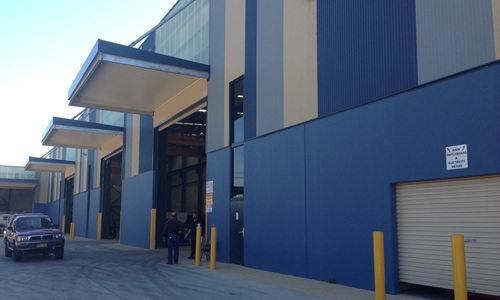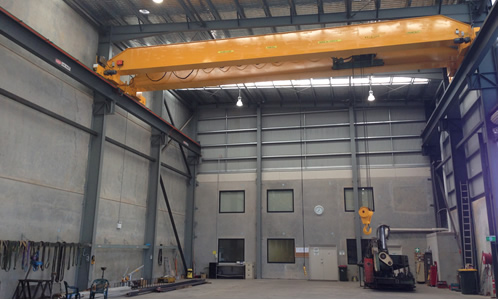Frequently Asked Questions About Pressure Vessel Design Registrations
CONTENTS
What type of registrations are required in Australia for pressure equipment?
What type of pressure equipment require design registration in Australia?
What are the requirements of regulations for a design registration?
Does pressure piping require design registration?
Do small-volume vessels require design registration?
Do non-metallic pressure vessel designs require registration?
What is the procedure for a design registration?
Can a design be registered in two different states?
Who can apply for a plant design registration?
What are the documents required for a design verification?
Is ASME sufficient to meet the code requirements for a design registration?
Is a registration number issued by a state valid for use within Australia?
What is the duration of a design registration?
What is the lead time to obtain a design registration number?
Is there a way to expedite the registration process?
Do all designs require verification?
What is the extent of design verification?
Can Pacific Engineering register a design?
Can Pacific Engineering register designs in Western Australia?
What are Major Hazard Facilities (MHFs)?
How does Major Hazard Facility affect AS4343 hazard level calculations?
What are the major alterations to pressure equipment?
Do we need to stamp the design registration number on the vessel or nameplate?
Certification and registration of imported pressure equipment
Certification by Pacific Engineering
Confidentiality
Further information
What types of registration are required in Australia for pressure equipment?
There are two types of registration:
(1) Design registration, which is a one-off process for every unique design.
(2) Item (or plant) registration, which is the registration of the actual plant as required by the regulations.
What types of pressure equipment require a design registration in Australia?
Pressure equipment including heat exchangers, finned tube air coolers, boilers, autoclaves, air receivers, condensers, tanks and pressure vessels within air conditioning units and other pressurised systems, categorised as hazard levels A, B, C and D according to the criteria identified in AS 4343 Pressure equipment - Hazard levels are subject to design registration in Australia.
What are the requirements of regulations for a design registration?
Work Health and Safety (WHS) Regulations in Australia require that designs of pressure equipment categorised as hazard levels A, B, C or D according to the criteria in Section 2.1 of AS 4343 Pressure equipment - Hazard levels must be registered with a WHS Regulator in a state or territory.
As part of the registration process, a pressure vessel design must be checked and verified by an independent design verifying body that the design complies with the original design code and/or Australian standard AS 1210 Pressure vessels.
Designers, manufacturers, importers, owners or suppliers can apply for a design registration number.
When design-registered equipment is altered in such a way that it constitutes a major change in its design, the design registration becomes invalid and a new design registration number must be obtained from the WHS Regulator for the equipment. The person designing the alteration should carry out a risk assessment on the altered vessel and consider all hazards. For pressure equipment that has been altered, a verification statement is also required stating that the alterations comply with a published standard.
The design registration number obtained is used for an item registration.
Does pressure piping require design registration?
No.
Do small-volume vessels require design registration?
Vessels greater than 0.05L in volume may require design registration depending on vessel contents (pressurising fluid) and design conditions.
Do non-metallic pressure vessel designs require registration?
Yes. Pressure vessels made of plastics, fibre-reinforced plastics, glass or other non-metallic materials with a hazard rating of A, B, C and D in accordance with Australian Standard AS 4343 also require design registration in Australia.
What is the procedure for a design registration?
Briefly, the following documents, as applicable, are prepared and submitted to the WHS Regulator for approval and registration:
- an application form signed by the applicant, designer and design verifier
- a design verification statement to the satisfaction of the WHS Regulator stating that the design of the pressure vessel complies with the design code or Australian standards (AS 1210, AS 4343) and engineering principles used in the design
- a third-party certified representational drawing of the pressure equipment
- determination of Hazard Level to AS 4343
- AS/NZS ISO 9001 Certificate of the design verifier
- a registration fee.
Can a design be registered in two different states?
No.
Who can apply for a plant design registration?
A manufacturer, designer, importer, supplier or owner of a plant can apply for a plant design registration.
Back to contents
What are the documents required for a design verification?
Where a design verification is required for a pressure vessel, a heat exchanger or an air cooler; at a minimum, the following documents shall be provided for a design review:
(1) representational drawing(s) showing the (i)design conditions, (ii)contents of pressure equipment, (iii)dimensions, (iv)materials of construction, (v)weld details and other details considered by the designer to be essential for proper verification
(2) mechanical design calculations.
The mechanical design calculations shall be verified for compliance with the appropriate Australian Standards (AS 1200, AS 1210, AS 4343, AS 4458, AS 3992, AS 4037) or other published standards (ASME VIII, API 660, API 661, API 662, PD/BS 5500, EN 13445, DIN/AD 2000 and GB 150, etc) considered appropriate by the regulatory authority, and any additional specifications requested by the purchaser.
Is ASME sufficient to meet the code requirements for a design registration?
Yes, ASME Boiler and Pressure Vessel Code Section VIII-1 and 2 are acceptable.
In addition to ASME, other published standards such as EN 13455, AD 2000, GB 150 and CODAP are also acceptable in most states/territories.
Is a registration number issued by a state valid for use within Australia?
Yes, states and territories accept a design registration number issued by another Australian State or Territory. As a general condition, the design verification statement must be completed and signed by a competent person who does not have any involvement in the design that is being verified and the design verifying body has an accredited quality system that meets the requirements of AS NZS ISO 9001.
What is the duration of a design registration?
A plant design registration is granted for an unlimited duration. However, if the design of a registered plant is altered, the altered design must be re-registered.
What is the lead time to obtain a design registration number?
Authorities usually issue a design registration number within 1-2 weeks or 6-8 weeks depending on the workload at the time of the application and the registering authority.
Is there a way to expedite the registration process?
No, Pacific Engineering can only accelerate the design verification process.
Do all designs require verification?
Yes, all designs including altered designs require design verification. The application documentation for registration must include a statement by a design verifier that the design is in accordance with the technical standard and/or engineering principles used in the design.
What is the extent of design verification?
The following aspects of the design shall be verified:
- Drawings showing the basic (i) design conditions, (ii) design standard, (iii) essential dimensions, (iv) hazard level, (v) weld details, (vi) connections and (vii) openings and NDT
- Materials of construction of pressure parts
- Thickness and adequacy of all pressure parts
- Supports where applicable
- Manufacture and testing requirements
- Specifications for flanges, valves and fittings
- Any other aspects of the design which are essential for verification.
Can Pacific Engineering register a design?
Yes, Pacific Engineering aids with the documentation required for the certification and registration of pressure vessels in any state/territory within Australia. We can prepare and submit the application documents for registration on your behalf. Following application, the Authority will issue a design registration certificate (and a design registration number) for each pressure equipment.
According to Australian Standards AS 1210, the design registration number must be hard stamped on equipment or etched on a nameplate that is permanently attached to the vessel.
Can Pacific Engineering register designs in Western Australia?
Yes, we can register pressure vessel designs in Western Australia as well as in other states and territories in Australia. We have already registered hundreds of vessels/heat exchangers in Australian Capital Territory, New South Wales, Queensland, South Australia, Victoria, Western Australia, Tasmania, Northern Territory and Comcare.
Back to contents
What are Major Hazard Facilities (MHFs)?
Major hazard facilities are workplaces that store, handle or process large quantities of hazardous material. Major hazard facilities typically include chemical plants, oil refineries, gas processing plants, LPG and LNG facilities and other manufacturing and transport depots.
How does MHF affect AS 4343 hazard level calculations?
According to AS 4343 Table 1, a factor of 3 is used in hazard level calculations of pressure equipment installed in a major hazard facility as defined in the National Occupational Health and Safety Commission (NOHSC) and the relevant state legislation.
What are the major alterations to pressure equipment?
Examples of major alterations include:
- An increase in design pressure or temperature of pressure equipment
- A decrease in MDMT
- The addition of new nozzles or openings which require redesign
- Dimensional changes of pressure equipment affecting stress calculations
- An increase in heating surface in a heat exchanger
- The addition of a pressurised jacket to pressure equipment
- Change of material of a pressure retaining part in a pressure vessel.
Where a major alteration is made to Hazard Level A, B, C and D of pressure equipment, the alteration is treated as a new design and the altered design requires re-registration.
Do we need to stamp design registration number on the vessel or nameplate?
As per the Australian Code, the design registration number provided by WHS Regulator must be stamped on each vessel or etched on a nameplate that is permanently attached to the vessel.
Certification and registration of imported pressure equipment
The verification of the design of imported equipment is carried out in accordance with AS 3920 by a certified design verifying body such as Pacific Engineering Pty Ltd.
Where disputes between the manufacturer and the design verifying body or the need for interpretations arise, the dispute or interpretation shall be referred to the WHS Regulator or Standards of Australia.
Certification by Pacific Engineering
After a design has been reviewed, subject to its compliance with the code requirements, a design verification certificate will be issued. An original copy of the certificate will be submitted to the WHS Regulator for registration and a copy of the certificate will be forwarded to the applicant for reference.
Confidentiality
The details of the design in our possession are disclosed only to the regulatory authority, certifying body, or a person authorised by the owner of the design.
For further information, send an email with your specific questions about pressure vessel design registration to sales@pacificengineering.com.au and visit the following websites:
worksafe.act.gov.au (ACT)
safework.nsw.gov.au (NSW)
worksafe.vic.gov.au (VIC)
safework.sa.gov.au (SA)
worksafe.qld.gov.au/(QLD)
commerce.wa.gov.au/worksafe/ (WA)
worksafe.tas.gov.au/ (TAS)
worksafe.nt.gov.au/ (NT)
Contents
Top of page
Previous page
The information provided in this section should be used as a guide only. Pacific Engineering Pty Ltd does not accept any responsibility concerning the accuracy of the content or any legal ramifications which could arise from using this document. It is the responsibility of the user to make sure they comply with Australian Regulations.
|









